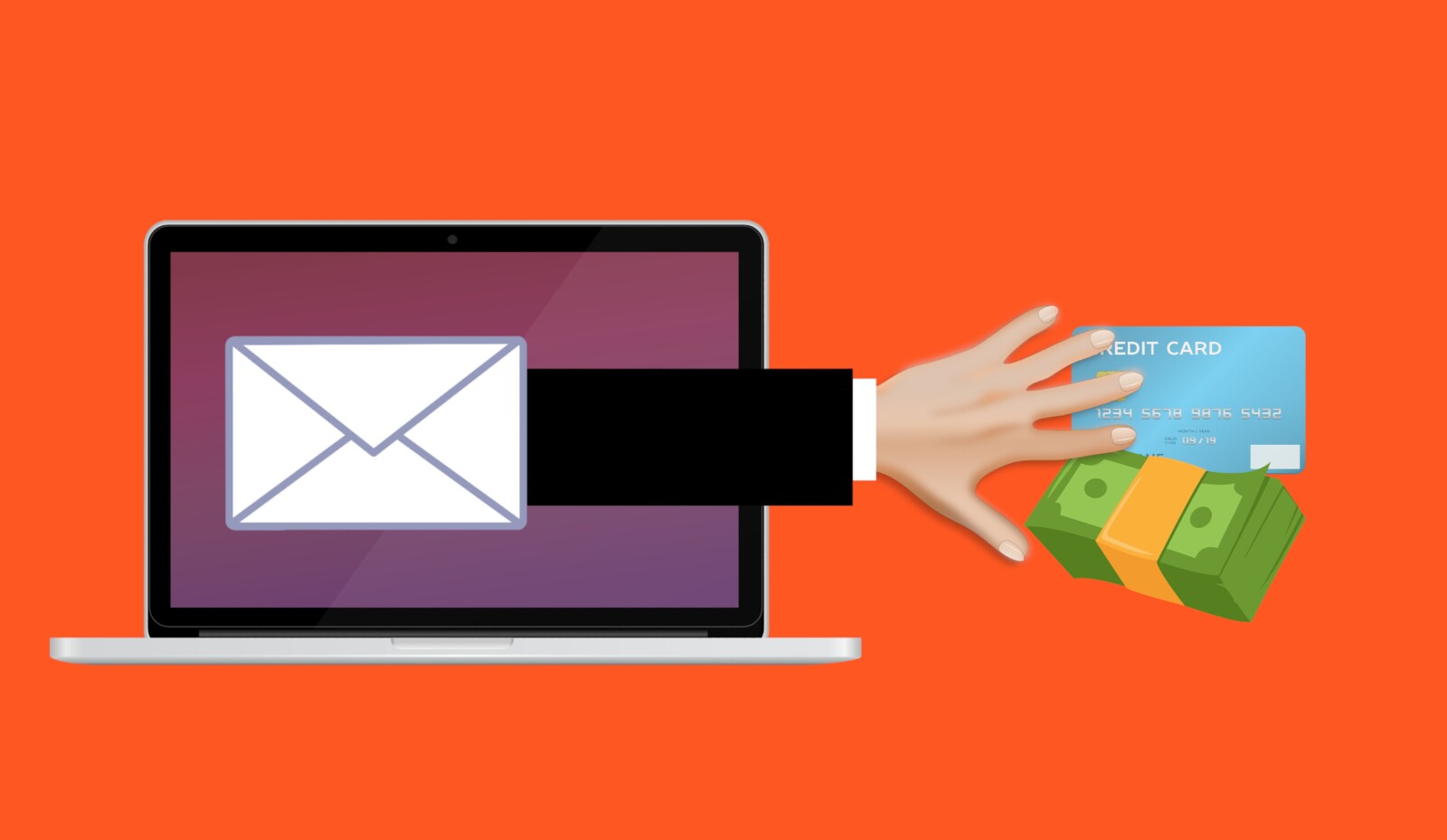The Sneaky Ways Credit Card Companies Charge You
In the rapidly evolving world of digital transactions, credit card users often encounter unanticipated charges, errors, or fraudulent activities on their statements. Such occurrences can lead to financial losses and pose significant challenges for consumers.

This comprehensive guide aims to equip consumers with essential knowledge and practical strategies to combat credit card transaction errors effectively. It elucidates the process of identifying unfamiliar charges, verifying account activities, and reporting discrepancies to the bank.
Further, it delves into an understanding of legal rights, the dispute process, and potential actions if a claim is denied. The guide also underscores preventive measures against fraud, the significance of regular statement checks, and advanced security features to consider for enhanced account protection.
By familiarizing themselves with these measures, consumers can navigate the intricacies of credit card transactions with increased confidence and security.
Key Takeaways
- Thoroughly review credit card statements and scrutinize vendor name, transaction amount, and date of purchase to recognize unfamiliar charges.
- Promptly report any discrepancies to the bank and document all interactions with the bank.
- Understand your legal rights under the Fair Credit Billing Act (FCBA) and the Electronic Fund Transfer Act (EFTA) to protect against billing errors and unauthorized charges.
- Take preventive measures against fraud, such as being cautious of phishing scams, using strong passwords, and regularly monitoring credit reports.
Recognizing Unfamiliar Charges
Identification of unfamiliar charges on credit card statements serves as the initial step in combating transaction errors. The process necessitates a thorough, meticulous review of the billing statement, which should be a routine practice for all credit card users. Charge identification techniques involve a careful scrutiny of all listed transactions, including the vendor's name, the transaction amount, and the date of purchase. These details are paramount in the identification of any discrepancies or unfamiliar charges.
Unfamiliar charges on a credit card statement can entail several implications. They may result from a simple clerical error, or they could be a sign of fraudulent activities, such as identity theft or card duplication. Therefore, it is essential to understand the fraudulent charge implications that may arise from such transactions. Failure to swiftly address these discrepancies can lead to credit score damage, loss of funds, or even legal complications.
While credit card companies have measures in place to detect fraudulent activities, these systems are not infallible. Consumers must take the initiative to regularly monitor their accounts and promptly report any suspicious charges. It is also advisable to keep receipts or records of purchases to compare with the billing statement.
Consequently, it is clear that recognizing unfamiliar charges is an essential aspect of maintaining financial security. Through vigilant charge identification techniques, consumers can avoid the negative impacts associated with fraudulent charge implications. It is a proactive approach to financial management that not only safeguards the consumer's financial health but also contributes to the overall security of the banking industry.
Verification of Account Activity
Regular scrutiny of account activity is pivotal in unearthing any possible discrepancies or unauthorized charges. This process involves more than just a cursory glance at the statement; it requires a detailed review of each transaction, including the date, vendor, and amount charged. The importance of this practice cannot be overstated as it forms the first line of defense against credit card fraud and transaction errors.
Identity verification methods play a crucial role in ensuring the security of one's account. These methods, which can range from biometrics to one-time passwords, add an extra layer of protection and can help prevent unauthorized access. Additionally, they can also aid in the quick detection of any suspicious activity. For instance, if a transaction is made without the necessary verification, this could serve as a red flag, prompting the cardholder to investigate further.
Mobile alerts setup is another effective tool in monitoring account activity. By receiving real-time notifications of each transaction, cardholders can immediately identify any unfamiliar charges. Moreover, these alerts can also provide timely reminders for payment due dates, thereby helping to avoid late fees or penalties. This proactive approach not only aids in the swift detection of transaction errors but also promotes responsible financial management.
Employing these strategies in the verification of account activity can significantly reduce the risk of credit card fraud and transaction errors. It empowers consumers to take control of their financial health and provides them with the tools necessary to combat unauthorized charges effectively. This underscores the importance of regular account review, identity verification methods, and mobile alerts setup in safeguarding one's financial resources.
Reporting the Discrepancy to the Bank
Prompt action in communicating any account irregularities to the financial institution forms a crucial step in the process of rectifying such discrepancies. Effective bank communication strategies are pivotal in this regard. The initial communication, preferably, should be done telephonically to ensure immediate attention. Subsequently, a written communication should follow, detailing the specific error and requesting an investigation. It is important to note the time, date, and the representative spoken to during the initial phone call for future reference.
Effective error documentation essentials require the inclusion of specific details about the transaction in question. This includes the date and amount of the transaction, as well as the nature of the error. It is recommended to include any supporting documents, such as receipts or emails, that can substantiate the claim. Furthermore, it is advisable to record all interactions with the bank, including letters, emails, and notes from phone calls or in-person meetings.
The bank, upon receiving the error report, is required by law to investigate the claim and resolve it within a specific timeframe. If the bank does not correct the error, the consumer has the right to ask for the documents proving the transaction was correct. If the bank fails to provide these documents, the consumer can file a complaint with the relevant regulatory body.
Therefore, prompt reporting of transaction discrepancies combined with effective bank communication strategies and meticulous error documentation can significantly ease the process of rectifying credit card transaction errors. It empowers consumers, safeguarding their financial interests against potential errors or fraudulent activities.
Understanding Your Legal Rights
Navigating the complexities of financial regulations, it is crucial for individuals to comprehend their legal rights when dealing with discrepancies in their banking transactions. The legal system provides several protections to consumers to ensure fair billing and transactional transparency. Predominantly, these rights are enshrined in the Fair Credit Billing Act (FCBA) and the Electronic Fund Transfer Act (EFTA), enabling individuals to contest billing errors and unauthorized charges.
The FCBA safeguards consumers from unfair billing practices, providing a comprehensive mechanism to dispute billing errors on credit card accounts. It mandates creditors to promptly acknowledge and investigate consumer disputes, ensuring a fair and efficient resolution process. The act also delineates specific consumer rights, including the right to withhold payment for disputed transactions and the right to sue creditors for non-compliance.
In tandem, the EFTA provides protections for consumers using electronic fund transfers. This act covers transactions involving ATM withdrawals, debit card purchases, and online banking, enabling consumers to dispute unauthorized electronic transfers. It also prescribes the liability limits for consumers, which are contingent on the promptness of the error report.
Furthermore, the Consumer Financial Protection Bureau (CFPB) oversees consumer protection in the financial sector. It enforces federal consumer financial laws and educates consumers about their rights, providing valuable resources for individuals navigating complex financial landscapes.
Understanding these legal rights is vital in dealing with credit card transaction errors effectively. Armed with this knowledge, consumers can assert their rights, ensuring fair billing and fostering a more transparent financial environment. These rights also underscore the importance of vigilance in monitoring bank statements and swiftly reporting any irregularities.
The Dispute Process Explained
Understanding the intricacies of the dispute process is essential for individuals seeking to challenge unauthorized charges or billing discrepancies effectively. This process enables consumers to contest unverified transactions and errors on their credit card statements, providing a safeguard against potential financial loss.
It is imperative to note that the dispute process is governed by strict timelines, and a clear understanding of these timelines is crucial to ensuring a successful dispute resolution.
Dispute timelines are an important component of the dispute process. The initial step involves the consumer identifying an error and notifying the credit card company in writing within 60 days of the statement date where the error appeared. Failure to adhere to this timeline can result in the consumer being liable for the unauthorized charge. Following this, the credit card company has 30 days to acknowledge the dispute and 90 days to investigate and resolve it.
Evidence collection is another critical aspect of a successful dispute process. Consumers must be prepared to provide necessary documentation to substantiate their claims. This may include sales receipts, proof of return or cancellation, or any correspondence with the merchant. The evidence should be clear, concise, and directly related to the disputed transaction.
The dispute process can be a powerful tool for consumers to rectify credit card errors. However, it necessitates a well-informed understanding of dispute timelines and meticulous evidence collection. It is important to remember that the burden of proof lies with the consumer. Therefore, ensuring timely and thorough documentation will greatly enhance the likelihood of a successful dispute resolution.
Awaiting the Bank’s Response
Once the dispute process has been initiated and all necessary documentation submitted, the next phase involves patiently waiting for the bank's response. This stage is crucial as it determines the conclusion of the dispute. The bank, upon receiving the dispute notice, has an obligation to investigate the claim and provide a response in a timely manner.
Effective customer communications play an essential role during this waiting period. Consumers should expect regular updates from the bank about the status of their dispute. These communications serve not only to keep the consumer informed but also to assure them that their claim is being taken seriously and is undergoing thorough investigation. It is advisable for consumers to follow up with the bank if they do not receive any update within a reasonable timeframe.
Understanding response timelines is also imperative. According to the Fair Credit Billing Act, the bank is required to acknowledge the dispute in writing within 30 days after receiving it, unless the problem is resolved within this time. Furthermore, the bank must conduct an investigation and resolve the dispute within two billing cycles (but no longer than 90 days) after receiving the dispute notice. If the bank fails to adhere to these timelines, it may forfeit the right to collect the disputed amount, even if the transaction was valid.
While awaiting the bank's response, consumers should remain vigilant and proactive. Regularly checking account statements, monitoring bank communications, and understanding the timelines involved can aid in successfully resolving a credit card transaction dispute. This not only ensures the fair treatment of consumers but also contributes to the overall integrity of the financial system.
Steps to Take if Your Claim is Denied
In the event that a claim is denied, there are specific steps that individuals should carefully consider and follow to challenge the decision. This course of action serves to mitigate the potential repercussions of a denied claim.
Initially, it is advisable to review the written explanation provided by the financial institution, as it outlines the reasons for the denial. This document may contain vital insights into the grounds on which the claim was rejected, thus providing a basis for crafting a suitable response.
As a subsequent step, one might consider crafting a detailed letter of dispute, providing additional documentation or evidence that supports the claim. This action should be taken promptly to ensure that the financial institution reconsiders the decision within the allowable time frame. Additionally, it is of paramount importance to maintain a record of all communication and documents exchanged during this process.
In some instances, despite providing thorough documentation, individuals might still face a denied claim. Alternative resolution methods may be explored under such circumstances. These methods could involve seeking assistance from consumer protection agencies or considering legal action. It is worth noting that the former is generally a more cost-effective and less time-consuming approach.
Moreover, individuals should remain cognizant of the potential impact on their credit score. A denied claim could be an indication of fraudulent activity, which if unchecked, could have detrimental effects on the individual's financial health. Therefore, regular monitoring of credit reports is strongly advised. This proactive approach aids in early detection and resolution of any discrepancies, thus protecting one's financial reputation.
Preventive Measures Against Fraud
Mitigating the risk of fraudulent activity necessitates the proactive implementation of preventive measures, which not only safeguard personal finance but also foster trust in financial institutions. Ensuring a secure financial environment requires an understanding of the potential risks and threats, coupled with the ability to recognize and counteract them effectively. The importance of this cannot be overstated, given the increasing sophistication of fraudulent schemes and the widespread use of technology in financial transactions.
Key preventive strategies include Identity Protection and Fraud Awareness. Identity Protection refers to the measures taken to safeguard personal information from unauthorized access and misuse. This can range from simple steps such as regularly updating passwords, using secure networks for transactions, and monitoring account activity, to more sophisticated measures such as setting up alerts for unusual activity and investing in identity theft protection services.
Fraud Awareness, on the other hand, involves understanding how fraud works, recognizing the signs, and knowing what to do when one suspects a fraudulent activity. This includes being vigilant about unsolicited communications requesting personal information, being cautious about sharing financial details, and promptly reporting suspicious activities to the appropriate authorities.
It is essential to remember that the best defense against fraud is a proactive approach. Regularly educating oneself about the latest types of frauds, staying updated about the preventive measures recommended by financial institutions, and diligently applying these measures can significantly reduce the risk of falling victim to fraud.
The role of financial institutions is equally crucial in this endeavor, as they must ensure robust security systems, provide timely fraud alerts, and offer assistance in case of fraudulent activities. This mutual effort can help create a secure financial landscape, preserving both personal finances and the integrity of financial institutions.
Importance of Regular Statement Checks
Regular scrutiny of financial statements emerges as a vital strategy in the ongoing battle against the relentless specter of fraudulent activities, illuminating any anomaly or suspicious activity in one's financial landscape. The importance of regular statement checks cannot be overstated. This practice offers an immediate advantage by revealing any discrepancies that may have arisen within the billing cycle, including unauthorized purchases or unidentifiable charges, which could potentially signify fraudulent activity.
Digital literacy training plays an integral role in this process. It equips consumers with the skills necessary to navigate digital banking platforms and understand the intricacies of financial statements. By fostering the ability to identify and dissect online financial transactions, consumers are better positioned to spot irregularities promptly. Furthermore, digital literacy training can also help individuals understand the mechanisms in place for reporting these discrepancies, ensuring that appropriate action is taken at the earliest possible juncture.
The importance of budgeting also comes into play. By maintaining a comprehensive budget, consumers can quickly identify if a transaction does not align with their planned expenditure. Budgeting serves as a financial blueprint, providing a clear picture of expected income and expenditure, thus making anomalies more apparent. Moreover, a well-maintained budget can aid in the swift detection of any fraudulent activity, promoting a proactive approach rather than a reactive one.
In the context of battling credit card transaction errors, regular statement checks serve as an indispensable tool. By combining this practice with digital literacy training and effective budgeting, consumers can fortify their defenses against potential fraud. This strategy not only mitigates risk but also ensures sound financial management and promotes a sense of financial security.
Advanced Security Features to Consider
As the digital landscape continues to evolve, the incorporation of advanced security features into financial systems emerges as a crucial element for safeguarding one's financial assets and personal information. With the rise in digital transactions, particularly those related to credit cards, consumers are advised to consider these features to protect against potential fraud.
One such advanced security feature is Biometric Authentication. This technology uses unique physiological characteristics, such as fingerprints, facial recognition, and voice recognition, to verify a user's identity and approve transactions. Biometric Authentication provides an additional layer of security, as it is difficult for fraudsters to replicate these unique identifiers. It reduces the risk of unauthorized transactions, thereby enhancing the security of credit card transactions.
Another significant advancement in securing credit card transactions is the use of Artificial Intelligence (AI) Monitoring. This technology employs machine learning algorithms to monitor and analyze credit card transactions in real-time. It can identify unusual patterns or abnormalities in transaction behavior, which may indicate potential fraud. Moreover, AI Monitoring can predict fraud trends and take proactive measures to prevent them from occurring. This predictive capability can significantly reduce the occurrence of credit card transaction errors and fraud, ensuring the security of consumers' financial resources.
The adoption of advanced security features like Biometric Authentication and AI Monitoring is a proactive approach towards securing credit card transactions. The digital era demands that consumers be vigilant and make use of these technologies to protect their financial and personal information. It is imperative to continuously adapt to technological advancements to effectively combat credit card transaction errors and potential fraud.
Frequently Asked Questions
What is the best way to keep track of all your credit card transactions?
Adopting a transaction organization system is paramount for efficient tracking of credit card transactions. This could involve using financial management software that categorizes and records each transaction.
Additionally, setting up spending alerts could serve as a practical strategy, notifying individuals when a transaction occurs, thereby facilitating real-time monitoring.
These methods not only support accurate record-keeping but also aid in the detection and correction of transaction errors, ensuring financial integrity.
How can consumers ensure they are using a secure network when making online transactions?
Ensuring secure network usage during online transactions necessitates the application of robust cybersecurity measures.
To enhance safety, consumers should prioritize network encryption, a process that converts readable data into coded language to prevent unauthorized access.
Moreover, vigilance in recognizing secure sites, indicated by 'https' in the URL, is crucial.
Additionally, the utilization of trusted antivirus software and firewalls strengthens protection against potential cyber threats.
Hence, these strategies effectively fortify online transaction security.
If a credit card is lost or stolen, what immediate precautions should be taken to prevent fraudulent activity?
Upon the loss or theft of a credit card, immediate action is crucial to prevent fraudulent activity. It is imperative to understand Cardholder Liabilities and Reporting Procedures.
Firstly, immediately contact the credit card issuer to report the incident and request card cancellation. This mitigates potential unauthorized charges.
Secondly, monitor account activity vigilantly for any suspicious transactions.
Lastly, file a report with local law enforcement, providing an extra layer of protection against potential fraud.
Can you hire a lawyer to handle a credit card transaction dispute?
Engaging a lawyer to navigate a credit card transaction dispute is certainly possible. Prior to such engagement, an evaluation of potential legal fees should be undertaken to ensure the cost-effectiveness of this approach.
Selection of a lawyer should involve careful consideration of their expertise and experience in handling similar cases. However, it is generally recommended to exhaust all other dispute resolution options offered by the credit card issuer before resorting to legal action.
Are there any recommended mobile applications to help monitor credit card transactions?
Numerous mobile applications are available to monitor credit card transactions effectively. Noteworthy ones include 'Mint', 'PocketGuard', and 'Clarity Money'.
These applications, however, require careful consideration of App Privacy Policies and Smartphone Security Measures. Users should ensure that the chosen application provides robust data encryption and adheres to stringent privacy policies.
These security measures protect sensitive banking information while offering real-time tracking and alerts for all credit card transactions.
Conclusion
In conclusion, addressing credit card transaction errors necessitates vigilance, proactive dispute resolution, and understanding of consumer rights.
Regular account monitoring, accurate discrepancy reporting, and the exploration of advanced security measures prove crucial in safeguarding against fraudulent activity.
Denied claims should be met with persistence and a solid grasp of the dispute process.
Ultimately, regular statement checks and preventive measures serve as the cornerstone in maintaining financial integrity.

This post has been generated by AI and was not reviewed by editors. This is Not legal advice. Please consult with an attorney.




